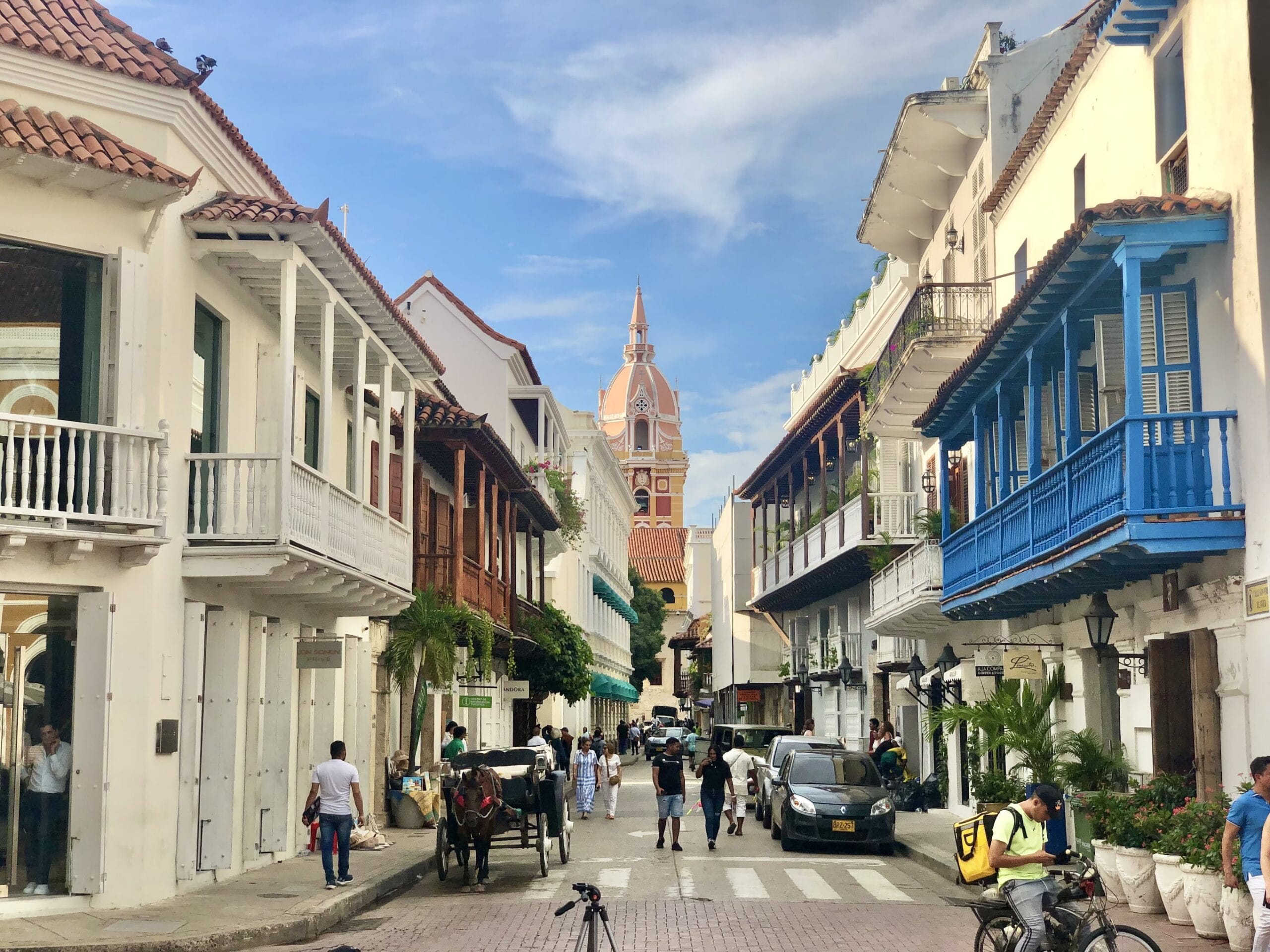Picture yourself strolling down streets lined with centuries-old colonial buildings painted in vibrant Caribbean hues, where wooden balconies overflow with cascading bougainvillea, and the warm sea breeze carries the distant sound of salsa music. Welcome to Cartagena, Colombia’s crown jewel of the Caribbean coast. Cartagena is perhaps Colombia’s most famous destination—and for good reason. Its colonial charm, vibrant and colorful houses, and centuries-old cobblestone streets create a setting recognizable even to those who know little about Colombia.
This was our second to last stop in Colombia, though that wasn’t part of our original plan. We ended up staying longer simply because we fell in love with the city. In this article, we’ll show you the best places in and around Cartagena, recommend where to stay, and give you vital info so you can get the most from one of Colombia’s most stunning locales.
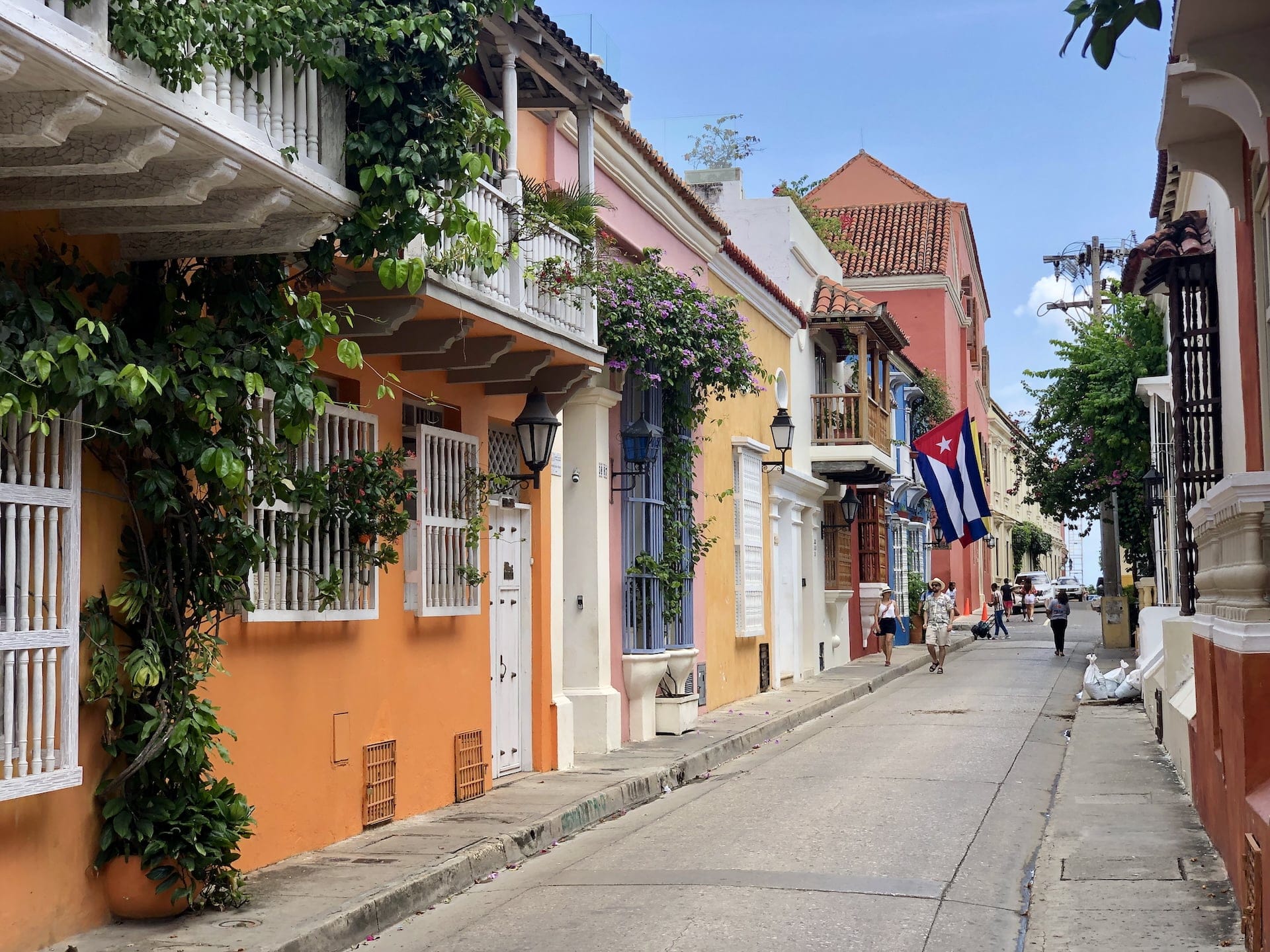
A Brief History of the City
Imagine stepping back nearly 500 years to June 1, 1533, when Spanish colonizers first established Cartagena de Indias. But this wasn’t just any colonial outpost—this strategic location would become one of the most significant cities in the Americas. The area’s history, however, stretches back much further, with indigenous settlements dating to around 4000 BC.
The Spanish weren’t just lucky in choosing this location—they were strategic. Nestled along the Caribbean Sea with easy access to the mighty Magdalena River, Cartagena was perfectly positioned to become the pride of Spain’s South American empire. While the city prospered as a crucial trading hub, its story isn’t all glory and gold—it was also a major port in the tragic Atlantic slave trade, a history that still influences the city’s rich cultural tapestry today.
Following 275 years of Spanish rule, the city began its path to independence—though it faced ongoing challenges and eventually saw its prominence as a trading center decline, partly in favor of nearby Barranquilla. Yet its old walled downtown blossomed into a shining jewel, marked by captivating colonial and republican architecture, while other districts are dotted with gleaming white skyscrapers and long stretches of sandy beach.
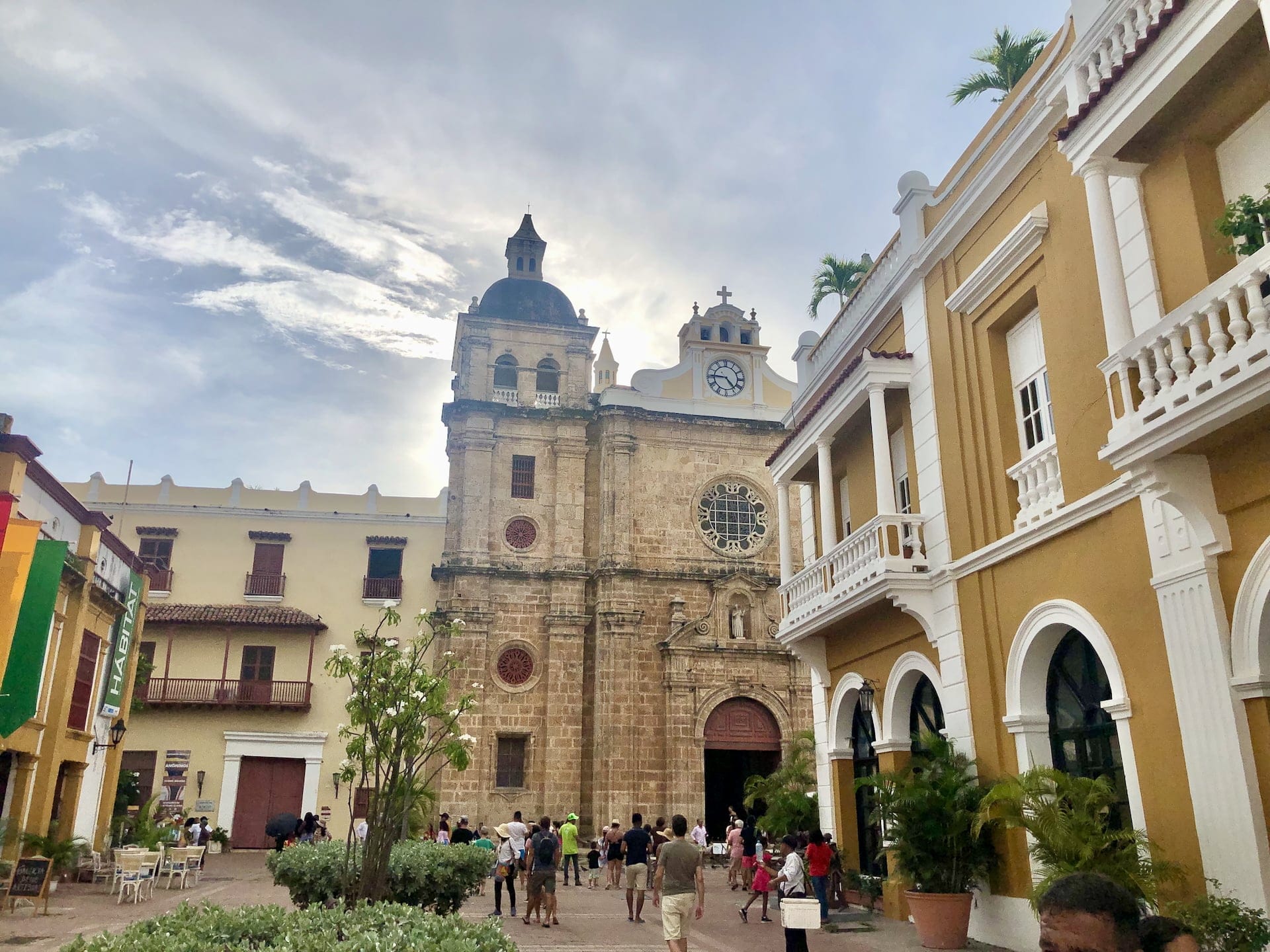
Today, Cartagena has about 1 million residents and ranks as Colombia’s fifth-largest city. It remains an important seaport, served by an international airport with numerous daily flights. Renowned for its cultural events, it is a key cultural center in the region. In 1984, UNESCO recognized its historic center and fortress as a World Heritage Site.
How to Get to Cartagena
Many visitors arrive at Rafael Núñez Airport, just a few kilometers—around a 20-minute taxi ride—from the old town. Uber and Cabify operate here (though Uber’s legal status is a bit uncertain); we mostly used Cabify in Colombia. Official taxis have set prices: in 2024, a ride to the walled city costs about 15,000-20,000 COP (~$4-5 USD). Look for the official taxi stand right as you exit the terminal.
The official stand inside the terminal handles fixed-rate airport taxis. Steer clear of drivers soliciting passengers outside; if you need a taxi, stick with the authorized service.
If you’re arriving from elsewhere in Colombia—such as from Bogotá or Medellín—it’s just a domestic flight. But if you’re following our three-week Colombia itinerary, you’ll likely come from Santa Marta by bus, since flights are unavailable between the two cities due to their proximity. We booked via redBus on Expreso Brasilia for about 70,000-80,000 COP (~$18-20 USD). Although the 230 km (143 mi) route should take 4.5 hours, it can easily stretch to 6 due to frequent stops and traffic near Barranquilla.
But don’t let the extended travel time discourage you—Colombian bus journeys are an experience in themselves. The air-conditioned coaches are comfortable, and the trip becomes an impromptu cultural immersion. We particularly enjoyed the parade of local vendors who hop on at various stops, offering everything from fresh fruit to traditional snacks. And there’s one unmistakable moment that always brings a smile: when the bus reaches cell service after a dead zone, and the simultaneous chiming of 50 WhatsApp notifications creates a spontaneous symphony of digital connection!
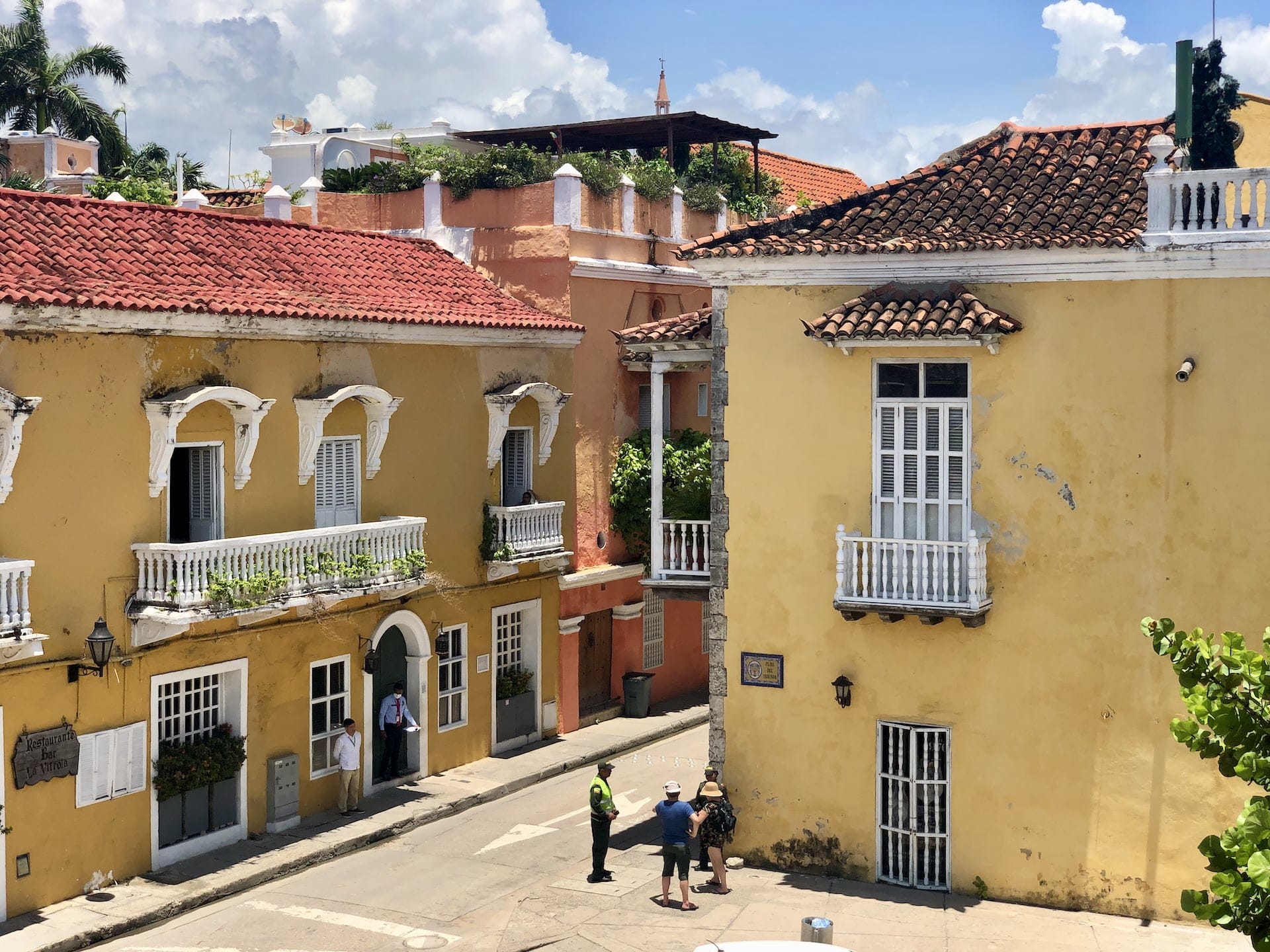
A third option is arriving via cruise ship. An estimated 97% of visitors who come by sea dock in Cartagena, so if you’re on a Caribbean cruise—maybe ending in Colombia—you’ll likely land here. The cruise port lies in the Manga district, slightly south of the old town, within an industrial zone where large vessels dock. If you plan to explore the city independently, be aware that the area is not especially scenic; you’d probably opt for your cruise’s official transport services or hail a taxi with a short walk.
Neighborhoods and Where to Stay
Don’t let Cartagena’s sprawling size on the map intimidate you. While this Caribbean metropolis houses a million souls, as a visitor, you’ll likely spend most of your time in an area that feels more like a carefully curated movie set—the enchanting colonial walled city (Centro), the bohemian Getsemaní district, and perhaps the Miami-esque Bocagrande area.
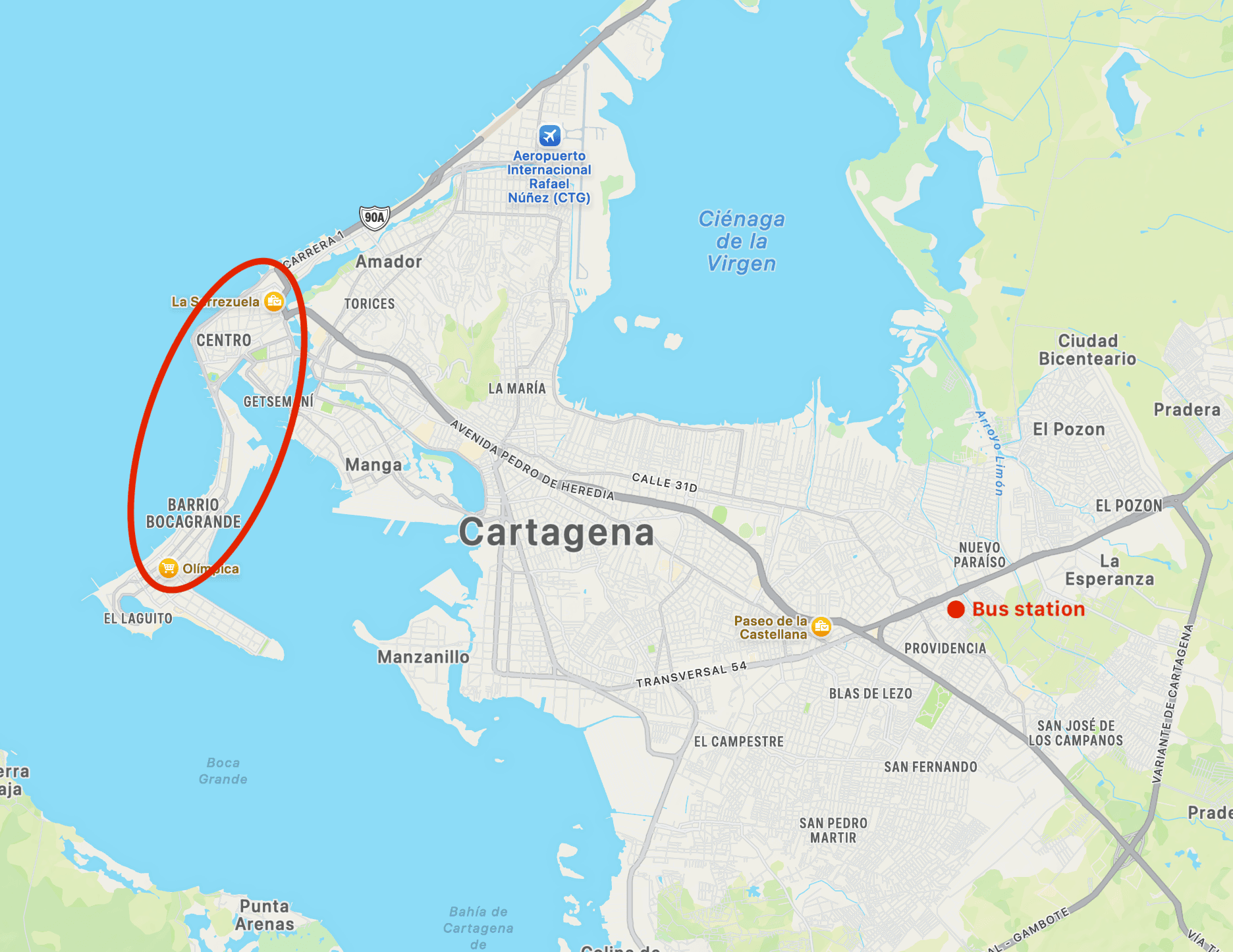
Our own accommodation story turned into quite the adventure. We found ourselves in what we affectionately dubbed “the yellow maze”—a massive yellow building next to the city wall that houses numerous Airbnb apartments, and a practical, however somewhat expensive tienda at the entrance. What started as a planned short stay turned into a bit more extended adventure when we fell in love with both the city and our perfectly positioned home base. Through some friendly negotiation with our host (and a bit of that famous Colombian flexibility), we managed to extend our stay by two more nights.
If you’re intrigued by our yellow maze experience, here are some apartments in that same building:
- One-bedroom apartment
- Two-bedroom apartment
- Another similar apartment
- A large penthouse that’s in a higher price range
A word of caution that comes from personal experience: when choosing your accommodation, air conditioning isn’t just a luxury—it’s practically a survival tool. We quickly learned that Cartagena’s heat and humidity make A/C in at least the bedroom non-negotiable, unless you enjoy feeling like you’re sleeping in a sauna!
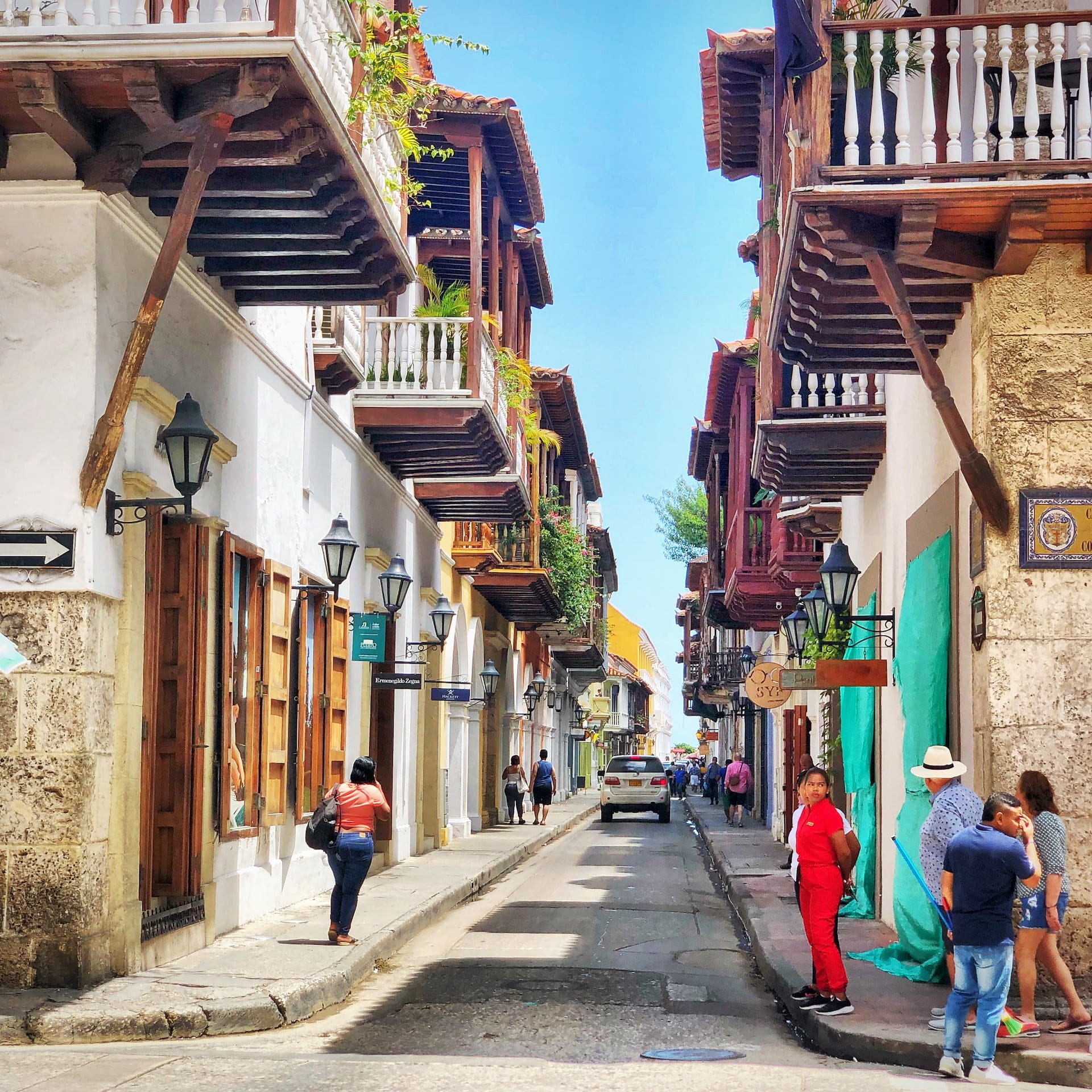
For those seeking a more traditional hotel experience, Cartagena offers some absolutely stunning options. Imagine waking up in a centuries-old colonial mansion that’s been transformed into a boutique hotel, where original features meet modern comfort. Here are some gems we’ve carefully selected:
If modern luxury is more your style, Bocagrande’s skyline is dotted with international hotel brands offering contemporary comfort with Caribbean views:
And for our backpacker friends, Getsemaní hosts some of the most social and atmospheric hostels:
As you can see from the above, tourists typically move between three main areas: the old walled Centro, the similarly atmospheric but slightly rougher-around-the-edges Getsemaní to the south, and the Bocagrande peninsula. If would like to stay in a modern hotel or apartment, you might also consider the Marbella area between Centro and the airport, though there’s not much to see here besides the beach. (However it’s worth noting: this is where you’ll find the Berlinas and MarSol minibus services if you’re planning trips outside the city.)
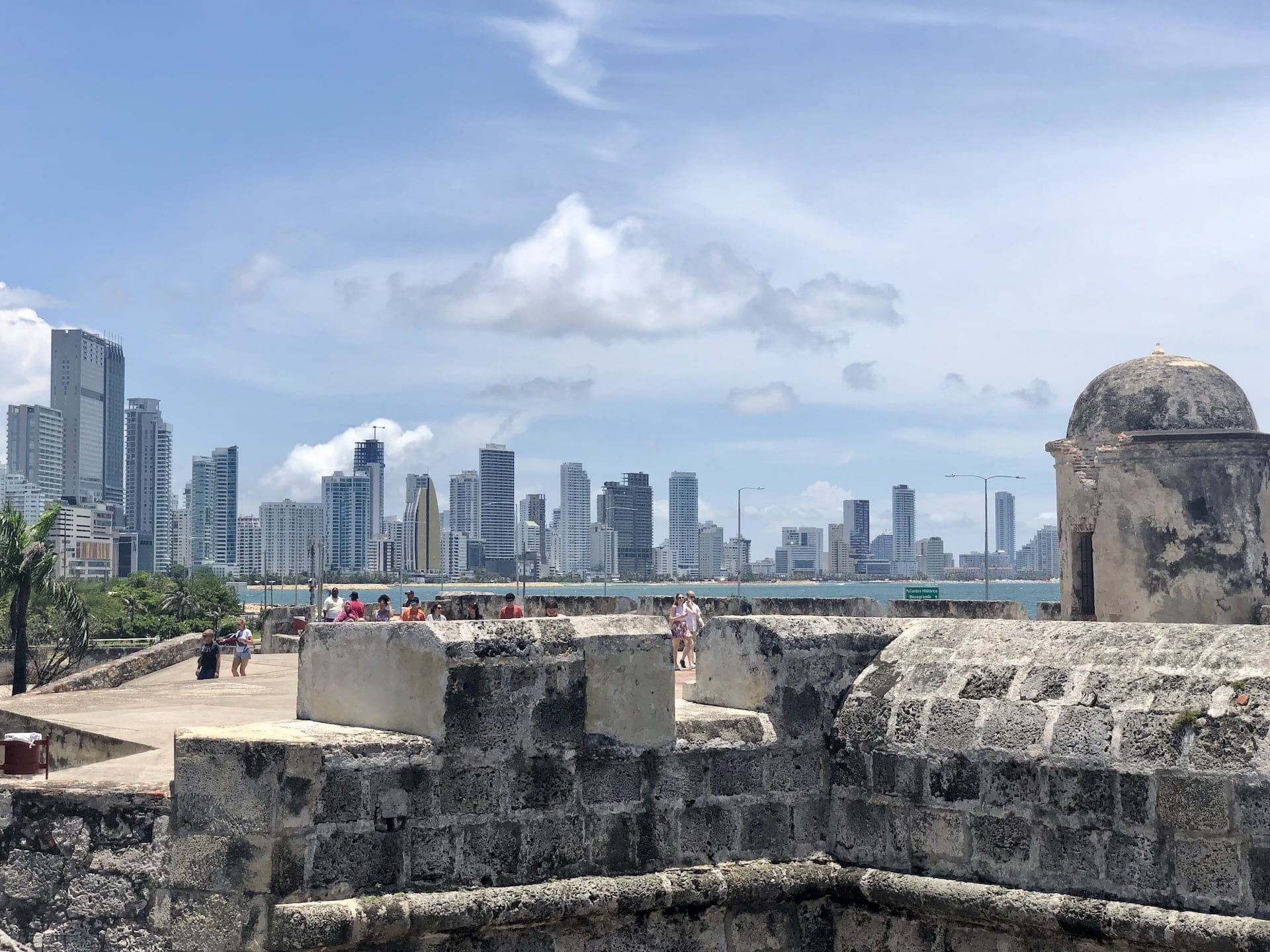
Attractions and Activities in Cartagena
You’ve arrived and unpacked, so it’s time to dive into the city! Cartagena is truly magical, though the magic is somewhat affected by the many (and really many) tourists who constantly fill the streets. This isn’t surprising: not only is it a beautiful place, but it’s also very close to North America, with numerous direct flights from Western Europe and other Latin American countries too.
As I mentioned we ended up staying a few nights longer than planned because we were enjoying ourselves so much. We also took a break from our previously busy Colombia itinerary and scheduled some days where we didn’t have to do anything on a schedule.
Plan to explore early in the morning or later in the afternoon, and consider spending the sweltering hours from 11 AM to 3 PM in museums or enjoying leisurely meals to avoid the worst heat.
City Exploration
There’s something magical about getting purposefully lost in Cartagena’s maze of colonial streets. Each corner reveals a new Instagram-worthy scene: centuries-old wooden balconies dripping with flowers, massive wooden doors that could tell a thousand stories, and walls in every shade of the Caribbean rainbow.
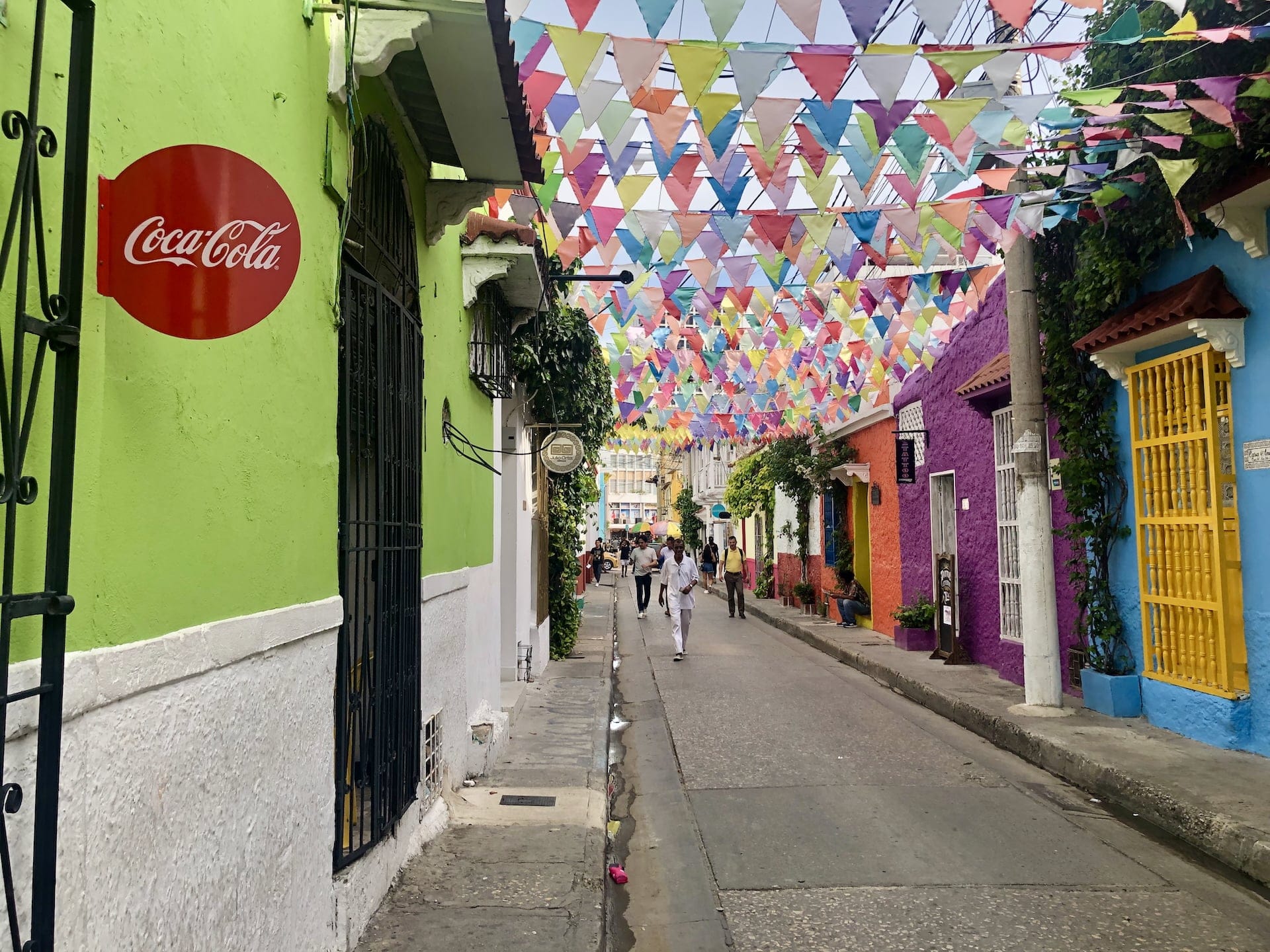
During our wanderings, we discovered a fascinating architectural drama playing out on the balconies. Those gorgeous wooden railings you see? They’re locked in an eternal battle with the salty sea air, requiring replacement every few years as the Caribbean climate slowly claims them. It’s why many homeowners switched to stone railings during the republican era—though personally, we found ourselves drawn to the romantic decay of the wooden ones.
Here’s an interesting tidbit that surprised us: those vibrant colors that seem so quintessentially Cartagena? They’re actually a relatively recent addition to the cityscape. Before its UNESCO World Heritage status, these buildings were simply whitewashed and often neglected. It’s a perfect example of how tourism, when done right, can help preserve historical treasures.
While the historic center is considered safe, you should still stay alert. Keep valuables secure, and consider carrying only what you need. Remember Colombia’s golden rule: no dar papaya (don’t give thieves a chance).
For one of our favorite local experiences, climb up onto the city walls around sunset. You’ll find yourself joining an impromptu community of kite flyers on the beach below, while above, locals and travelers alike perch on the ancient stones, cold cerveza in hand, watching the show. It’s these unplanned moments that make Cartagena special.
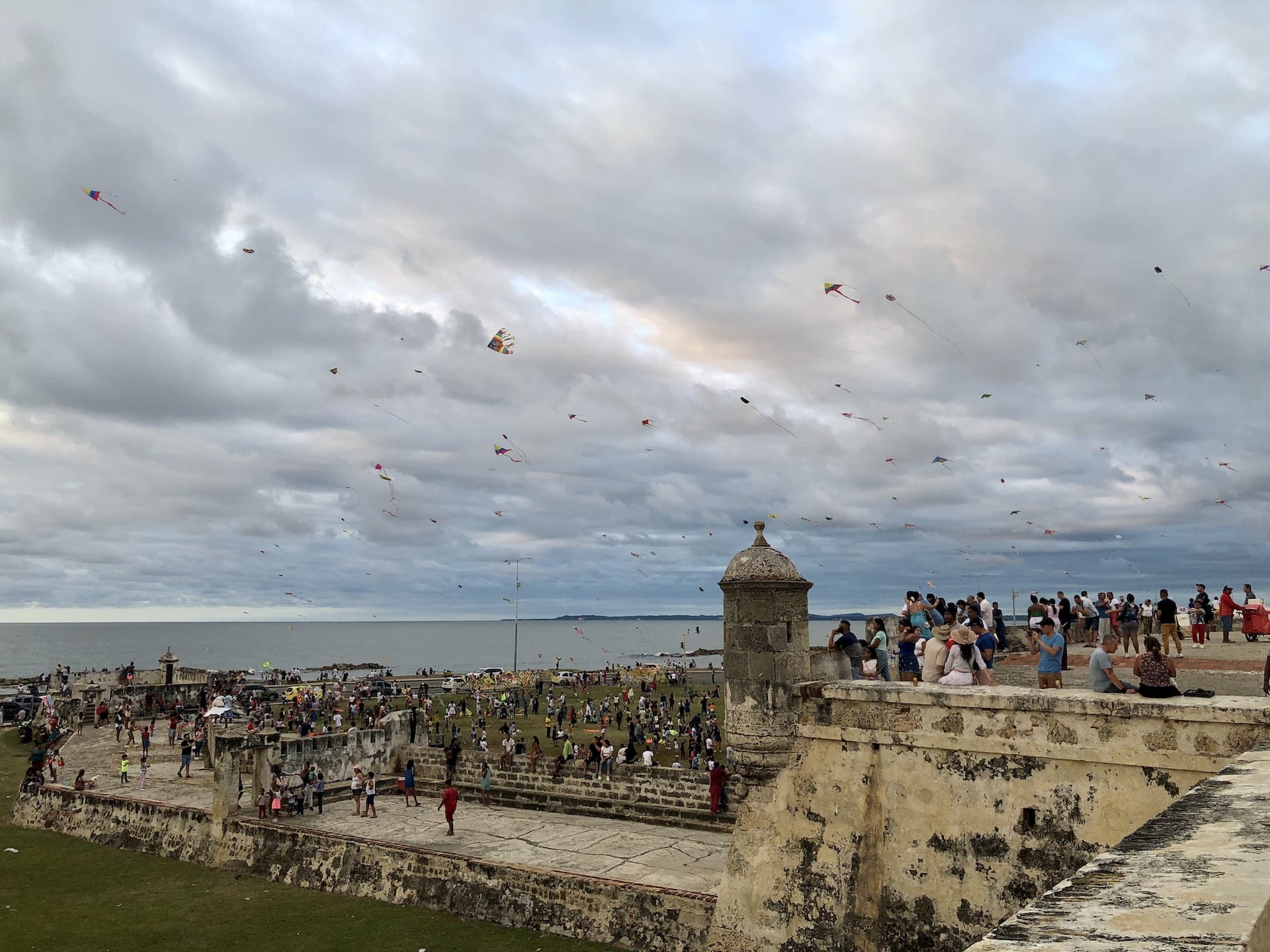
Speaking of special moments, don’t miss Getsemaní. Just a 15-minute stroll from Centro, this neighborhood feels like Cartagena’s artistic soul came to life and painted itself on every available surface. Here, the streets aren’t just colorful—they’re a riot of flags, street art, and the vibrant dresses of the palenquera fruit vendors who’ve become living symbols of the city’s complex history.
Free Walking Tour
Similar to Bogotá, we chose one of Beyond Colombia’s free tours after our first day of aimless wandering to get to know the city and its history better. We experienced the same professional guiding as in the capital, with lots of interesting facts, historical perspectives, and insights into the city’s daily life. Peter even won his third bracelet in the quiz game at the end of the tour. It’s important to note that, as with all “free” walking tours, you should be prepared to tip at the end—honestly, I’m not sure what’s customary, but 50,000 COP (~$13 USD) seems about right.
Beyond Colombia offers three tours in total, one in Centro, one in Getsemaní, and one that covers both—we took the regular Walled City tour.
Museums
There aren’t many museums in the city, but if you need to escape the intense heat and humidity (or a heavy downpour), they can be a good choice. Perhaps the largest and most well-known is the Naval Museum (Museo Naval de Caribe), located at Plaza de Santa Teresa.
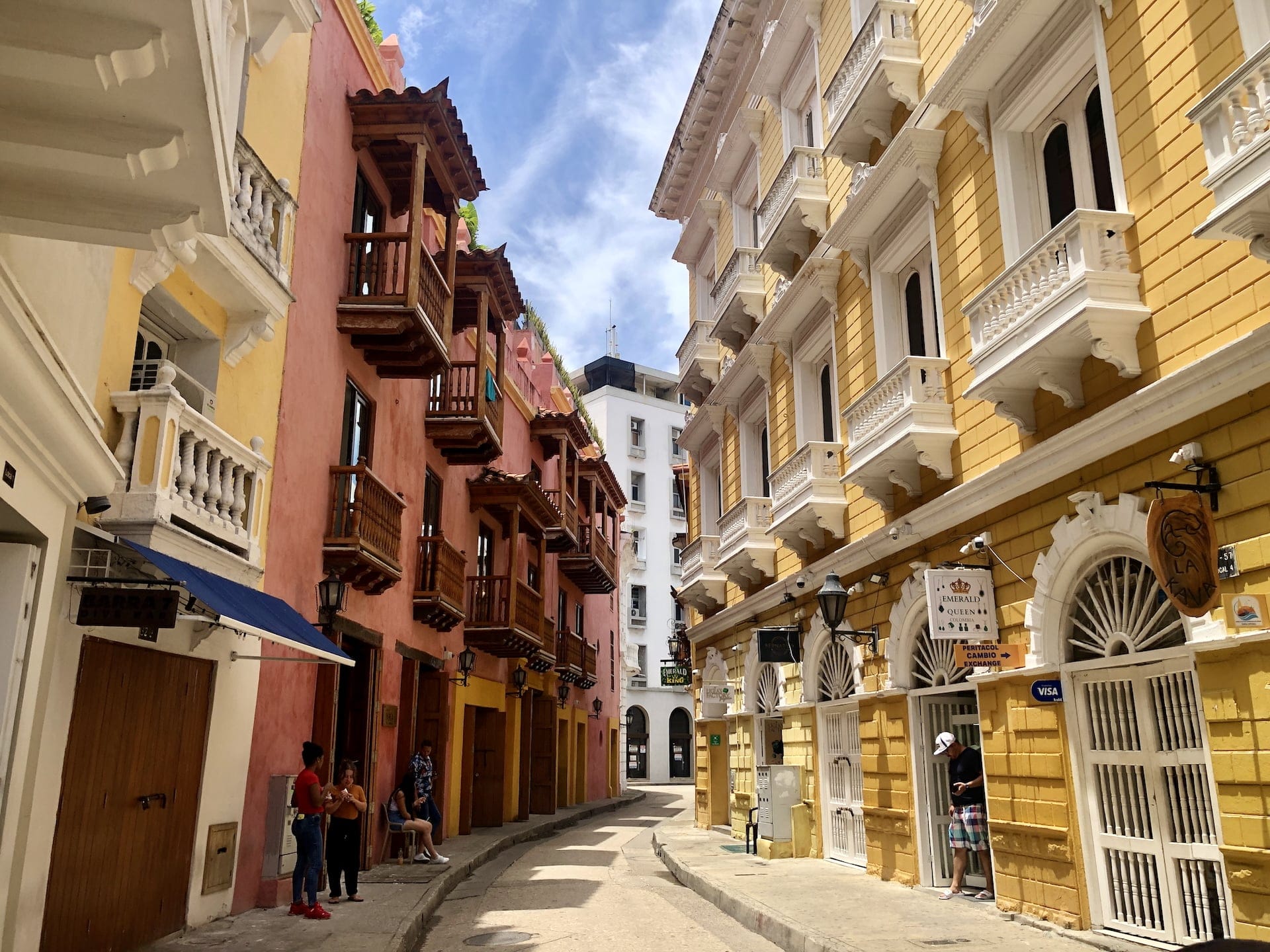
The city’s history is showcased at the Museo Histórico de Cartagena de Indias, located in the intriguingly named Palacio de la Inquisición (yes, that Inquisition) on Plaza de Bolívar. Practically across from it, you can visit the local gold museum, Museo del Oro Zenú—though don’t expect treasures of the same scale as its Bogotá counterpart.
Churches
You’ll find numerous historical, centuries-old Spanish-style churches even within the tiny walled city area. If you join a free walking tour, you’ll see the most important ones, but if you’re exploring independently, here are the ones worth visiting:
- Catedral Basílica Metropolitana de Santa Catalina de Alejandría (the cathedral with the beautiful long name on the corner of Plaza de Bolívar)
- Iglesia de San Pedro Claver (the church with the surprisingly concise name located on the square of the same name)
- Convento de Santo Domingo (the oldest church in the city, on Plaza Santo Domingo)
Palenquera Fruit Vendors
While walking around the city, you’ll quickly notice women in very colorful dresses balancing fruit baskets on their heads. These are the Palenqueras. Their story is fascinating: in short, they are descendants of the first freed slaves. Their homeland is San Basilio de Palenque, located about 50 kilometers southeast of the city, which gained independence from Spanish colonial rule in 1691 (it’s also now a UNESCO World Heritage site).
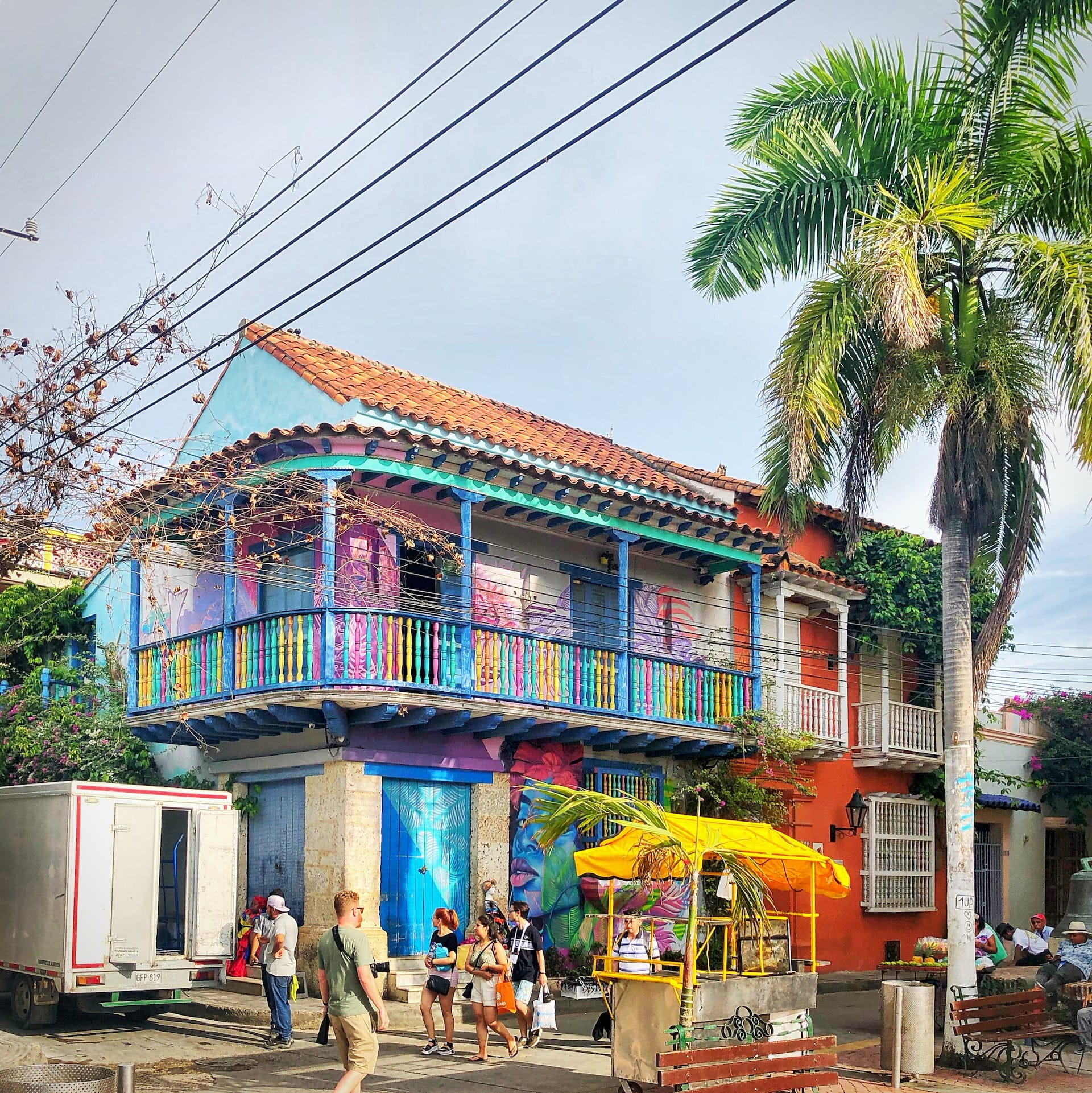
Originally, they were indeed fruit traders, with their colorful dresses showcasing their African heritage. To this day, they remain important reminders of the area’s and city’s history, though fruit selling has taken a back seat. This shift was actually driven by tourism, as visitors were the first to treat them as attractions and photo subjects, eventually offering tips for photos.
Today, this practically means they primarily pose for tourist photos in exchange for payment—and if you photograph them without permission, they’ll quite emphatically express their disapproval. Let me be upfront about this: it’s not a criticism, just something worth knowing before you visit. If you want to take photos with or of the palenqueras, always ask first, and remember that this has become their livelihood. Nevertheless, they still wake up at dawn, arrive early in the city with heavy fruit bowls on their heads, and continue to represent the region’s history of exploitation, just as they have for centuries.
Beach Time
Cartagena isn’t particularly famous for its beaches—you might be better off visiting the Rosario Islands (perhaps on a day trip by boat), but since the city is on the Caribbean coast, you can certainly head to the beach.
We specifically visited the Bocagrande peninsula for this purpose, taking an Uber there. A several-kilometer-long beach stretches at the foot of the modern buildings, and since it’s practically in the city, you’ll find numerous restaurants, cafes, and bars here. However, during our visit, it was extremely crowded, and the various vendors are perhaps more persistent than elsewhere in Colombia, so don’t expect a peaceful beach experience.
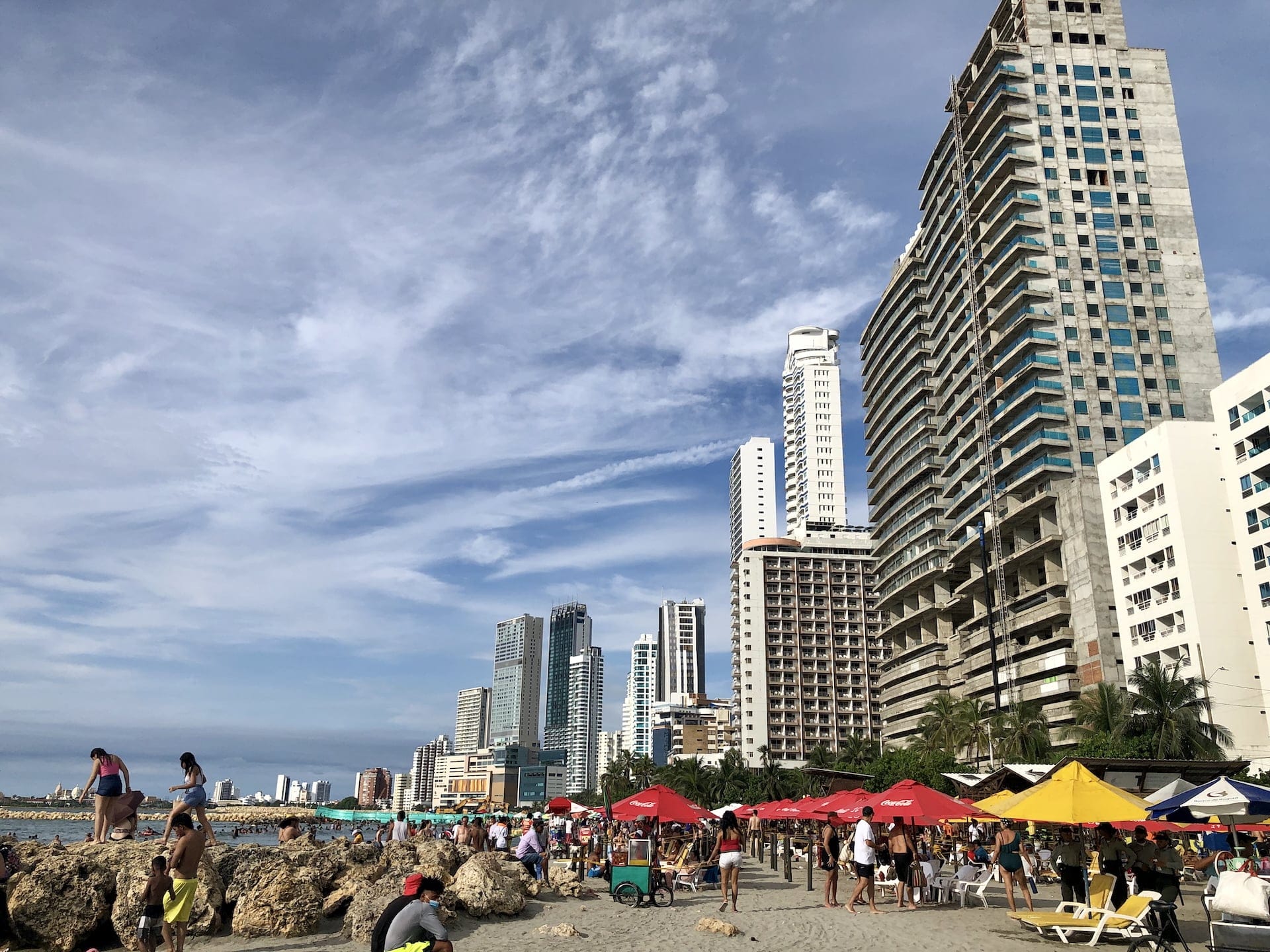
On Bocagrande beach, agree on prices with vendors before accepting any services, including chair rentals or drinks. Keep your belongings secure and within sight at all times.
The Marbella area between the airport and old town is similar, though we didn’t visit for beach purposes, only passing by in a taxi, so I can’t provide specific details.
Sunset
The city’s Caribbean coastline supposedly offers stunning sunsets. I say supposedly because I honestly didn’t see a single decent sunset not just in Cartagena, but during my entire time on the Colombian coast.
This doesn’t mean you won’t see one, so it’s good to know where to watch the sun’s final minutes. Many swear by Café del Mar on the city wall, but there are two problems with this. First, incredibly long lines start forming around sunset because somehow it’s become known as the best place to watch this event while sipping a cocktail—so it’s hard to get in. Second, it’s frankly overpriced and definitely doesn’t deliver what you’d expect for the prices.
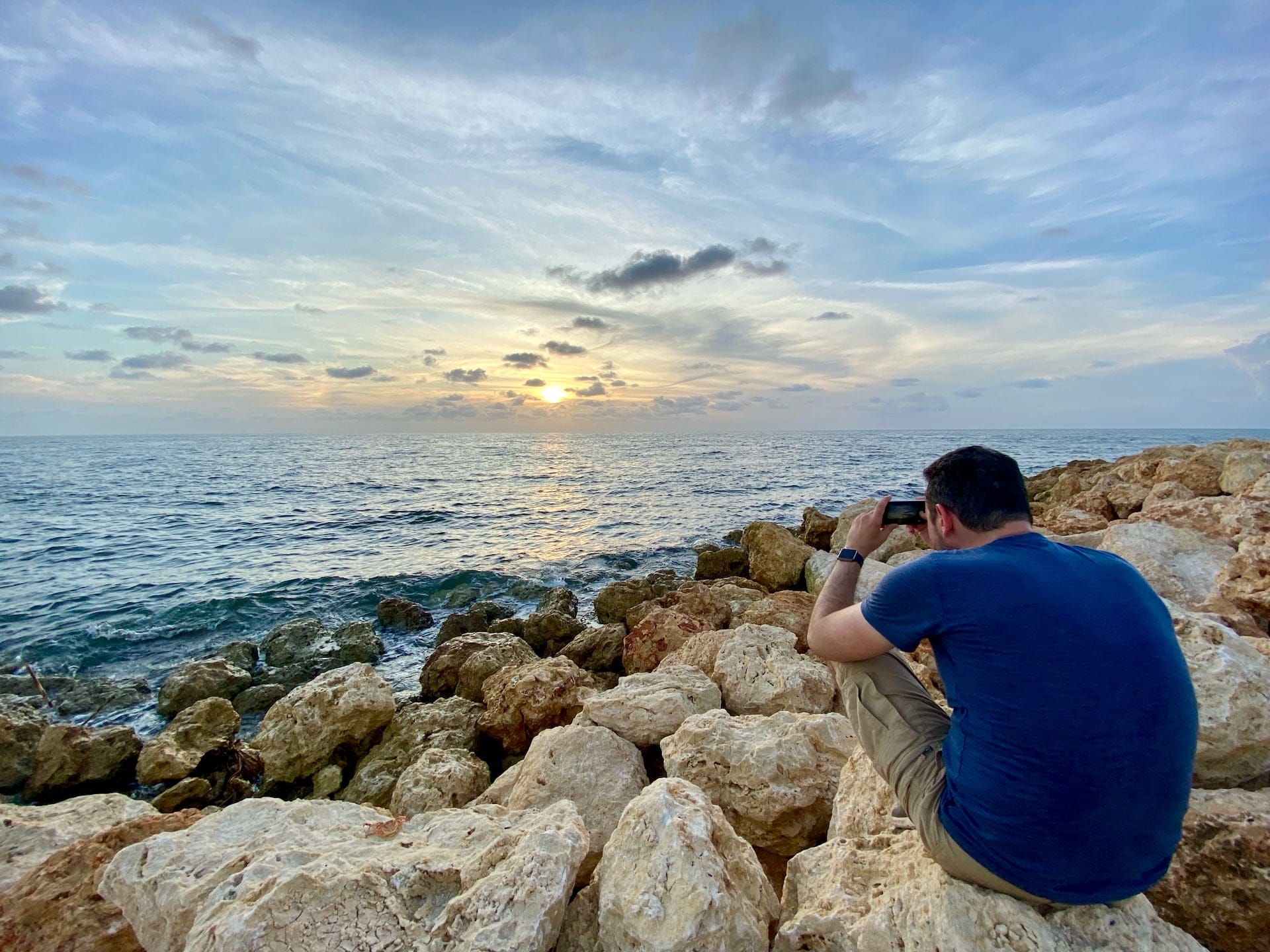
So, it’s much simpler to just watch the sunset from the city wall instead of the café. Or even better, do what we did: buy a cold beer from one of the many street vendors, cross over the city wall and the busy Avenida Santander near Café del Mar, then sit on the rocks lining the beach and watch the event in peace (as much as possible with the traffic behind). But be careful: first, the road itself is quite busy, and second, the rocks aren’t designed for climbing around on them, so do this at your own risk!
Day Trips Around Cartagena
Boat Trips
Being an important seaport, you can reach many places from Cartagena by boat, and there are many day trips available to nearby islands. We took a trip aboard the Bona Vida catamaran for a full day of sailing. The price included snorkeling equipment (though the marine life isn’t particularly exciting) and lunch, and during stops, you could swim, head to the beach, or rent jet skis from the quickly appearing enterprising vendors. The boat was very tourist-oriented, we didn’t meet any locals on board, but on the plus side, you could pay for everything by card.
If you’re looking for a more local experience, visit the port between Centro and Getsemaní, or at the end of Bocagrande at Castillo Grande, where speedboats (lancha) used by locals depart. Prices aren’t fixed, and when Peter decided to visit a new acquaintance on nearby Tierra Bomba island, they definitely charged him the gringo price—though it was still reasonable.
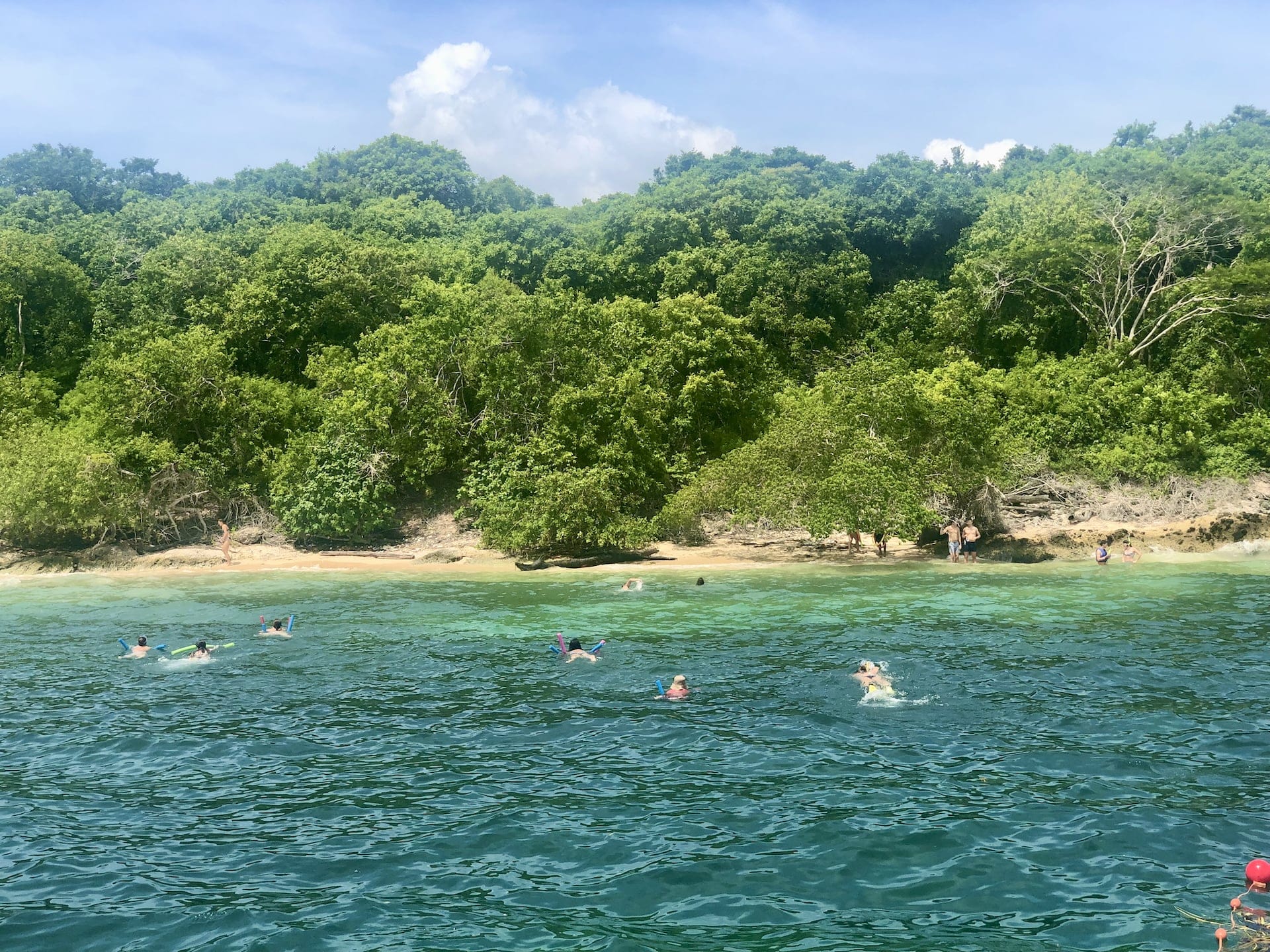
Palenque
We discussed the palenqueras above. If you’d like to delve deeper into their history, see the first free settlement in the colonial territories, and experience a bit of Africa on the South American continent, you can easily do so with a day trip. These tours usually include lunch, a dance performance, and a brief introduction to the local language. You can find a tour here, but there are several similar ones available.
Barranquilla
With MarSol or Berlinas, you can reach the region’s largest city, Barranquilla, in about two and a half hours. While several Colombian celebrities were born here (including Shakira and Sofía Vergara), honestly, it can be skipped as it doesn’t necessarily hold many attractions for travelers—unless you arrive during carnival season (February or March, depending on the year), when you can experience one of Colombia’s most famous spectacles. Though in that case, you probably shouldn’t just go for a day.
If you do make a lightning visit, you can check out the colonial buildings in the El Prado neighborhood, true fans might want to see the Shakira statue, the Catedral Metropolitana María Reina de Barranquilla is an interesting modern church, and the glass Ventana al Mundo is an impressive modern structure.
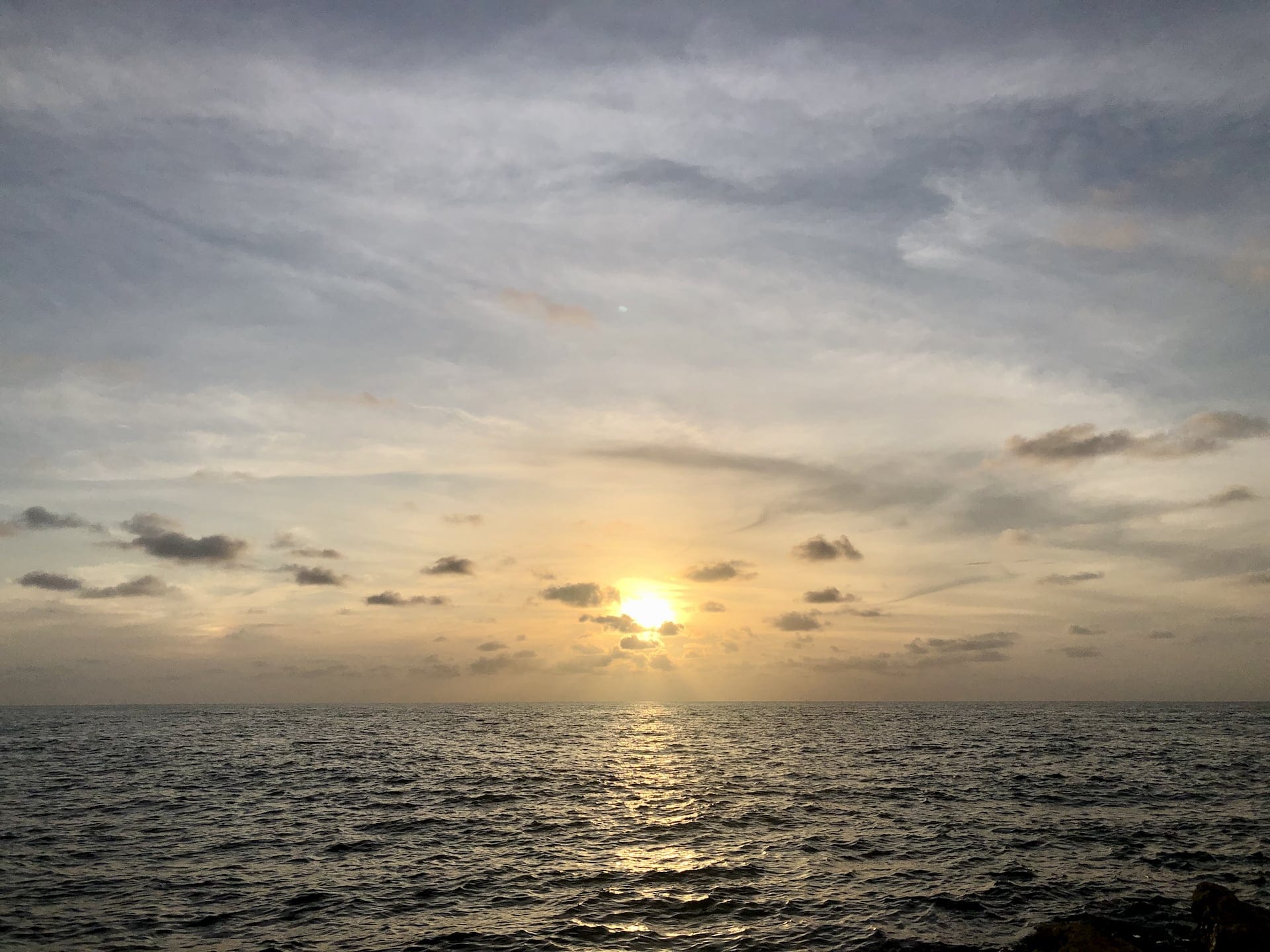
Weather and Useful Information
Let me be completely frank about Cartagena’s climate: it’s tropical to its core. That means consistent warmth—and when I say warmth, I mean we’re talking temperatures climbing well into the 30s°C (90s°F) during the day, and even at night, it rarely dips below 25°C (77°F). Combine that with 80-90% humidity, and you’ve got what I personally experienced as a challenging environment. Being someone who struggles with humid heat, I found myself constantly sweating. In fact, it was during a stop for an ice-cold michelada (Colombian style: beer with lemon and lime juice) in Getsemaní that I coined the term “Caribbean hell”—a phrase that perfectly captured my state at that moment.
Don’t let this deter you though—Cartagena is absolutely worth visiting when you’re in Colombia. Just come prepared:
- Start your days as early as possible
- Seek shade during peak hours
- Stay hydrated (and go easy on the beer!)
- Make sure your accommodation has air conditioning
- Pack sunscreen and a hat—essential items, as I learned the hard way after getting severely sunburned despite my best efforts to stick to the shade at noon
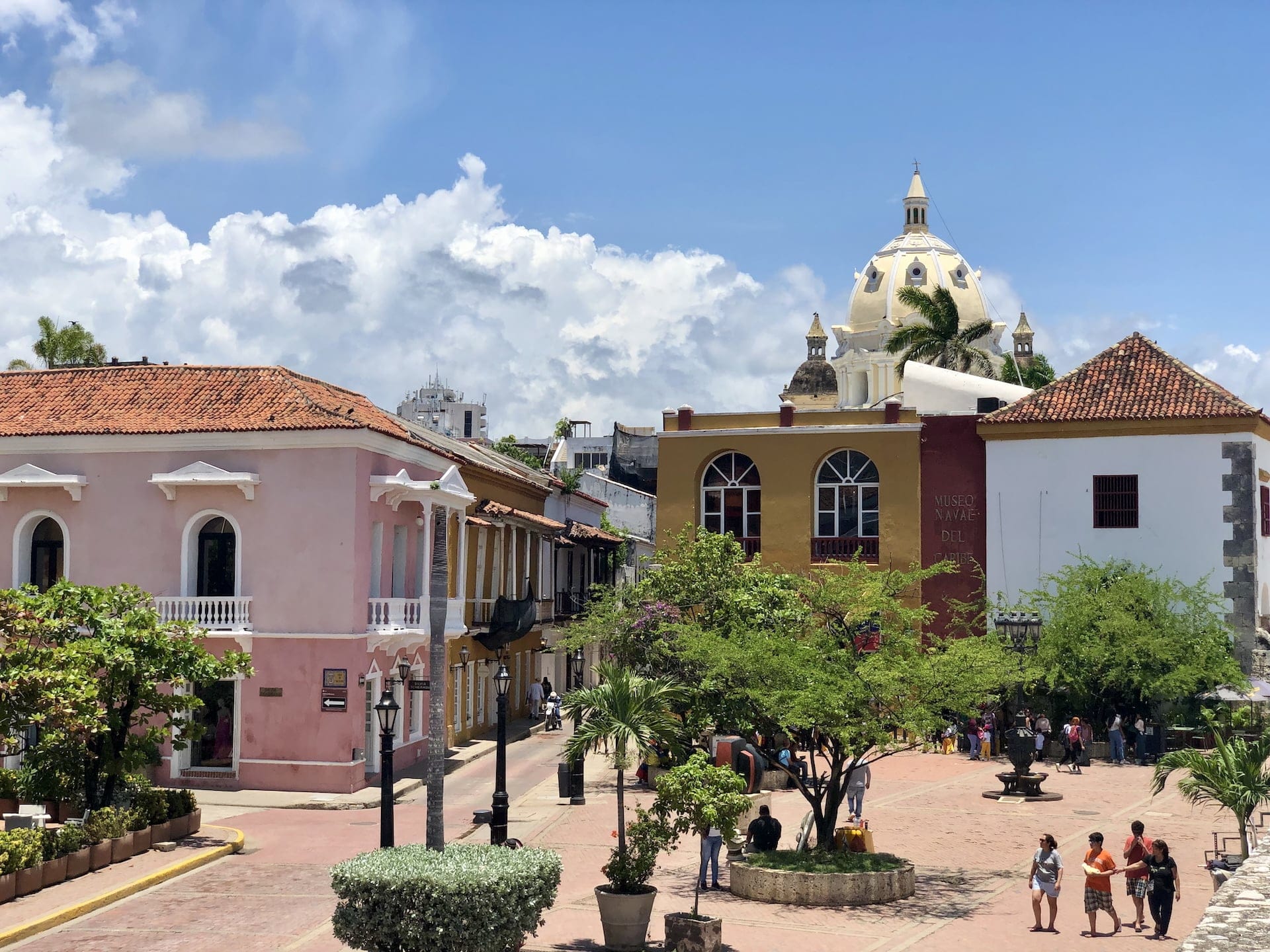
Regarding seasons, the rainy period runs from May to November, though “rainy season” might be overselling it. During our five-day September stay, we didn’t see a single drop of rain.
Transportation is straightforward if you choose your location well. The old town is wonderfully walkable, and when you need to venture further—say, to Bocagrande—taxis or Uber/Cabify are your best options.
One important note: Cartagena is extremely tourist-popular, meaning you’ll be sharing those charming but compact historic areas with plenty of other visitors, regardless of when you visit (though January-March sees peak crowds). This popularity has its downsides—including our first encounter in Colombia with vendors offering “white coffee”—the country’s notorious export. Our advice? Simply ignore such approaches.
Conclusion
Cartagena truly embodies everything that makes Colombia’s Caribbean coast special—from its colonial heritage to its vibrant culture and tropical atmosphere. Yes, the heat and humidity can be challenging, and yes, the tourist crowds might feel overwhelming at times, but the city’s charm is impossible to deny. Whether you’re wandering through the old town’s colorful streets, delving into its rich history, or using it as your base for Caribbean adventures, Cartagena offers something for everyone.
We recommend allocating at least 3-4 days here to properly experience what the city offers, though you could easily extend that to a week if you include day trips. Just remember to take it slow, keep hydrated, and embrace that laid-back Caribbean lifestyle that makes Cartagena so unique.
